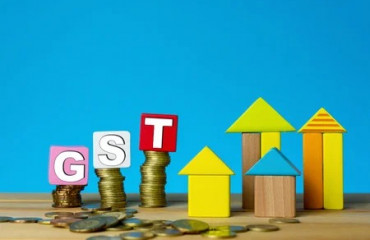
For decades, India fought one great battle—hunger. We built ration shops, expanded food programmes and ensured no child went to bed hungry. Those efforts worked. In one generation, poverty at the $3-a-day line has plunged from nearly half the population in 2004 to below 5% today. Millions of families that once struggled for daily calories now have full plates. But victory over scarcity has brought a new problem.
For decades, India fought one great battle—hunger. We built ration shops, expanded food programmes and ensured no child went to bed hungry. Those efforts worked. In one generation, poverty at the $3-a-day line has plunged from nearly half the population in 2004 to below 5% today. Millions of families that once struggled for daily calories now have full plates. But victory over scarcity has brought a new problem.
As India has grown richer, a different epidemic has quietly spread—obesity. Far more Indians today fall ill or die from over-eating and inactivity than from hunger. What was once a symbol of prosperity has become a threat to health, productivity and growth.
In just a few decades, India has moved from scarcity to plenty. Food is cheaper, work is less physical and daily life has become easier. Yet our bodies haven't kept pace. The same instincts that once helped us survive famine now push us towards over-consumption. The comforts we worked so hard to achieve are now quietly harming us. This is a prosperity trap, where progress begins to turn against itself.
The World Health Organisation (WHO) defines obesity as a Body Mass Index (BMI) of 30 or more. That standard fits Europeans, not Indians. For us, the danger starts much earlier. At a BMI of just 24, Indians face the same risk of diabetes and heart disease as Europeans do at 30. At the same weight, we have 5-10 percentage points more body fat and less muscle, much of it around vital organs. So a person who appears 'normal' on paper may already be at serious risk.
Officially, only 5% of Indians are obese, but using a more realistic Indian threshold, nearly 30% may already be economically obese, facing obesity-level health risks.
This is not a cosmetic issue. Obesity quietly drains household budgets, shortens lives and slows the economy. More than half of all young urban Indians are expected to develop diabetes in their lifetimes. The average patient already spends about ₹15,000 a year on care—roughly 3–5% of their income. Heart disease, much of it linked to obesity, causes over one in four premature deaths nationwide.
Across emerging economies, obesity is estimated to erode close to 2% of GDP each year through rising medical costs, reduced productivity and early mortality.
Obesity is not just about personal choice. It is also about how our surroundings shape those choices. Our bodies evolved to crave energy-rich food in times of scarcity, but today markets overflow with cheap, processed, calorie-dense options —from fried snacks to sugary drinks—available at every corner. Advertising glamorizes these products, while healthier options cost more or are harder to find. India's food system was built to fight hunger, and that mission succeeded. The challenge now is to adapt to an age of abundance.
Recognizing this, Prime Minister Narendra Modi has urged all Indians to reduce their edible oil consumption by 10%, a call he reiterated in his Deepavali message to citizens—a timely reminder that individual health choices have national consequences.
Even as obesity rises, India still faces widespread undernutrition among children and women. These problems often coexist within the same household, as families consume calorie-rich but nutrient-poor foods. Addressing this 'twin burden' requires better diets overall, not simply more or less food. Both challenges share the same solution: improving food quality, awareness and access to balanced nutrition.
The first step is to acknowledge reality. India needs a more realistic measure of obesity—a BMI threshold of around 24, not 30. Accepting this would reveal the true scale of the problem and help focus public attention. Obesity must be recognized for what it is: a national health risk with wide economic consequences. It affects productivity, savings and the well-being of future generations.
Some signs of progress are visible. The new 40% tax on sugary drinks under GST 2.0 has sparked an important conversation in India about the cost of unhealthy diets. Clearer front-of-pack labels for processed foods can help consumers make informed choices. Strengthening health surveys to track waist size, weight and blood sugar levels will show where risks are growing fastest.
Over time, cities can be made more walkable, schools can promote daily sports and physical education, and national dietary guidelines can evolve to emphasize proteins, fruits and healthier oils. Above all, public education must connect daily consumption choices to long-term health outcomes.
India's welfare and food systems were designed for a time when the goal was simply to ensure we had enough to eat. By that measure, we have succeeded. The next step is to ensure that abundance leads to health, not disease. A strong, healthy and productive population is the foundation of sustained prosperity.
India's progress has always been driven by collective purpose—from conquering hunger to expanding opportunity. The next stage of that journey is to secure the health of the Indian population. Obesity is not merely a medical condition; it is a macroeconomic issue. Acting with the same resolve that once conquered hunger can help India build an economy defined not just by prosperity, but by well-being.
These are the authors' personal views.
The authors are, respectively, chief economic advisor, Government of India; and an economist at Columbia University and president of the Global Talent Fund.
